#that British soldiers A. are the only ones capable of compassion to the enemy
Text
so I experienced my own version of Barbenheimer on my flight back to America from Japan that my boyfriend has dubbed Barbenteen. because I replaced Oppenheimer with 1917. I currently have a pet interest in World War I fiction that discusses the hopeless brutality of war as compared and contrasted with the humanity within it, and also I just really wanted to watch the Barbie movie, so it seemed like a good choice of duo.
anyway the Barbie movie did a better job of humanizing the Kens who redeemed themselves after the failure of their radical conservative takeover than the movie about war’s senseless violence and futility did of humanizing… literally any of the German soldiers, at all, whatsoever. which is Sure Not Something I Thought I’d Be Saying But Here We Are
#red randomness#barbie#wwi#it was so frustrating because 1917 had many good qualities#the degree of the horrors it showed. the friendship at the heart of it all and the tragedy of it.#the focus on lower class lower rank soldiers instead of officers#the fact that this war is literally being fought by men so young they’re basically kids#but when you have the only interactions with Germans#serve only to prove#that British soldiers A. are the only ones capable of compassion to the enemy#and B. any attempts at compassion toward German soldiers will end in betrayal and death#then congratulations! you’ve fucked up catastrophically as a war movie!#like are we still demonizing the Germans about this war? what fucking year is it?#would it have been so horribly impossibly difficult to show even one German soldier repaying compassion in kind?#I’ve already ranted about this to everyone I know but. sigh#anyway if you know any other good WWI movies (aside from All Quiet which I’m already going to watch with my boyfriend)#then please let me know! there must be at least one that doesn’t do this shit
5 notes
·
View notes
Text
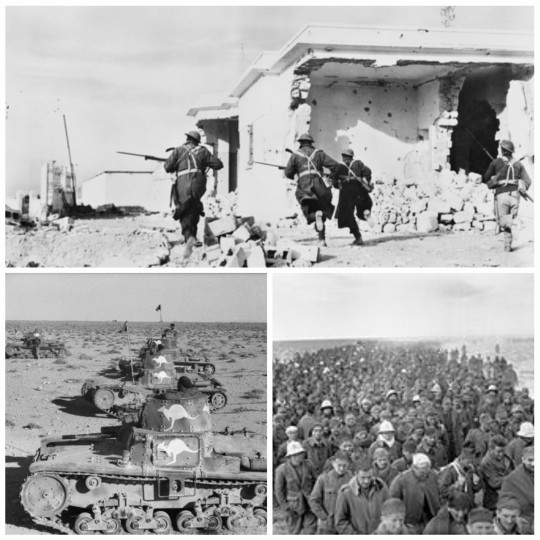
• Battle of Bardia
The Battle of Bardia was fought between January 3rd and 5th 1941, as part of Operation Compass, the first British military operation of the Western Desert Campaign of the Second World War.
Italy declared war on the United Kingdom on June 10th, 1940. Bordering on the Italian colony of Libya was the Kingdom of Egypt. Although a neutral country, Egypt was occupied by the British under the terms of the Anglo-Egyptian Treaty of 1936, which allowed British military forces to occupy Egypt if the Suez Canal was threatened. A series of cross-border raids and skirmishes began on the frontier between Libya and Egypt. On September 13th, 1940, an Italian force advanced across the frontier into Egypt, reaching Sidi Barrani on September 16th, where the advance was halted until logistical difficulties could be overcome. Italy's position in the centre of the Mediterranean made it unacceptably hazardous to send ships from Britain to Egypt via that route, so British reinforcements and supplies for the area had to travel around the Cape of Good Hope. For this reason, it was more convenient to reinforce General Sir Archibald Wavell's Middle East Command with troops from Australia, New Zealand and India. Nonetheless, even when Britain was threatened with invasion after the Battle of France. On December 9th, 1940 the Western Desert Force under the command of Major General Richard O'Connor attacked the Italian position at Sidi Barrani. The position was captured, 38,000 Italian soldiers were taken prisoner, and the remainder of the Italian force was driven back. The Western Desert Force pursued the Italians into Libya, and the 7th Armoured Division established itself to the west of Bardia, cutting off land communications between the strong Italian garrison there and Tobruk. On December 11th, Wavell decided to withdraw the 4th Indian Division and send it to the Sudan to participate in the East African Campaign. The 6th Australian Division (Major General Iven Mackay) was brought forward from Egypt to replace it and Mackay assumed command of the area on December 21st,1940.
After the disaster at Sidi Barrani and the withdrawal from Egypt, XXIII Corps (Generale di Corpo d'Armata (Lieutenant General) Annibale Bergonzoli) faced the British from within the strong defences of Bardia. Mussolini wrote to Bergonzoli, "I have given you a difficult task but one suited to your courage and experience as an old and intrepid soldier—the task of defending the fortress of Bardia to the last. I am certain that 'Electric Beard' and his brave soldiers will stand at whatever cost, faithful to the last." Bergonzoli replied: "I am aware of the honour and I have today repeated to my troops your message — simple and unequivocal. In Bardia we are and here we stay." Bergonzoli had approximately 45,000 defenders under his command. The Italian divisions defending the perimeter of Bardia included remnants of four divisions. Bergonzoli also had the remnants of the disbanded 64th "Catanzaro" Infantry Division, some 6,000 Frontier Guard (GaF) troops, three companies of Bersaglieri, part of the dismounted Vittorio Emanuele cavalry regiment and a machine gun company. These divisions guarded an 18-mile (29 km) perimeter which had an almost continuous antitank ditch, extensive barbed wire fence and a double row of strong points. The strong points were situated approximately 800-yard (730 m) apart. Each had its own antitank ditch, concealed by thin boards. They were each armed with one or two Cannone da 47/32 M35 (47 mm antitank guns) and two to four machine guns. The weapons were fired from concrete sided pits connected by trenches to a deep underground concrete bunker which offered protection from artillery fire.
Each post was occupied by a platoon or company. The inner row of posts were similar, except that they lacked the antitank ditches. The posts were numbered sequentially from south to north, with the outer posts bearing odd numbers and the inner ones even numbers. The actual numbers were known to the Australians from the markings on maps captured at Sidi Barrani and were also displayed on the posts themselves. The major tactical defect of this defensive system was that if the enemy broke through, the posts could be picked off individually from the front or rear. The defence was supported by a strong artillery component, yet the large number of gun models, many of them quite old, created difficulties with the supply of spare parts. The older guns often had worn barrels, which caused problems with accuracy. Ammunition stocks were similarly old and perhaps as many as two-thirds of the fuses were out of date, resulting in excessive numbers of dud rounds. Shortages of raw materials, coupled with the increased technological sophistication of modern weapons, led to production problems that frustrated efforts to supply the Italian Army with the best available equipment. As a "mobile reserve" there were thirteen M13/40 medium tanks and a hundred and fifteen L3/35 tankettes. The L3s were generally worthless, the M13/40s were effective medium tanks with four machine guns and a turret-mounted 47 mm antitank gun for its main armament that were "in many ways the equal of British armoured fighting vehicles". Bergonzoli knew that if Bardia and Tobruk held out, a British advance further into Libya eventually must falter under the logistical difficulties of maintaining a desert force using an extended overland supply line. Not knowing how long he had to hold out, Bergonzoli was forced to ration his stocks of food and water so that O'Connor could not simply starve him out. Hunger and thirst adversely affected the morale of the Italian defenders that had already been shaken by the defeat at Sidi Barrani.
On the Allied side, the 6th Australian Division had been formed in September 1939 as part of the Second Australian Imperial Force. Prime Minister Robert Menzies ordered that all commands in the division were to go to reservists rather than to regular officers, who had been publicly critical of the defence policies of right wing politicians. The result was that when war came, the Army's equipment was of World War I vintage and its factories were only capable of producing small arms. Fortunately, these World War I-era small arms, the Lee–Enfield rifle and the Vickers machine gun, were solid and reliable weapons that would remain in service throughout the war; they were augmented by the more recent Bren light machine gun. Most other equipment was obsolescent and would have to be replaced but new factories were required to produce the latest items, such as 3-inch mortars, 25-pounder field guns and motor vehicles; War Cabinet approval for their construction was slow in coming. The training of the 6th Australian Division in Palestine, while "vigorous and realistic", was therefore hampered by shortages of equipment. These shortages were gradually remedied by deliveries from British sources. Similarly, No. 3 Squadron RAAF had to be sent to the Middle East without aircraft or equipment and supplied by the Royal Air Force, at the expense of its own squadrons. Despite the rivalry between regular and reserve officers, the 6th Australian Division staff was an effective organisation. Brigadier John Harding, the chief of staff of XIII Corps, as the Western Desert Force was renamed on January 1st, 1941. Harding later considered the 6th Australian Division staff "as good as any that I came across in that war, and highly efficient." As it moved into position around Bardia in December 1940, the 6th Australian Division was still experiencing shortages. It had only two of its three artillery regiments and only the 2/1st Field Regiment was equipped with the new 25-pounders, which it had received only that month. Only A Squadron of the 2/6th Cavalry Regiment was on hand, as the rest of the regiment was deployed in the defence of the frontier posts at Al-Jaghbub and Siwa Oasis. The 2/1st Antitank Regiment had likewise been diverted, so each infantry brigade had formed an antitank company but only eleven 2-pounders were available instead of the 27 required. The infantry battalions were particularly short of mortars and ammunition for the Boys anti-tank rifle was in short supply.
To make up for this, O'Connor augmented Brigadier Edmund Herring's 6th Australian Division Artillery with part of the XIII Corps artillery: the 104th (Essex Yeomanry) Regiment, Royal Horse Artillery, equipped with sixteen 25 pounders. Italian gun positions were located using sound ranging by the 6th Survey Regiment, Royal Artillery. At a meeting with Mackay on Christmas Eve, 1940, O'Connor visited Mackay at divisional headquarters and directed him to prepare an attack on Bardia. O'Connor recommended that this be built around the 23 Matilda tanks of the 7th Royal Tank Regiment (Lieutenant Colonel R. M. Jerrram) that remained in working order. The attack was to be made with only two brigades, leaving the third for a subsequent advance on Tobruk. Mackay did not share O'Connor's optimism about the prospect of an easy victory and proceeded on the assumption that Bardia would be resolutely held, requiring a well-planned attack. The plan developed by Mackay and his chief of staff, Colonel Frank Berryman, involved an attack on the western side of the Bardia defences by 16th Australian Infantry Brigade (Brigadier Arthur "Tubby" Allen) at the junction of the Gerfah and Ponticelli sectors. Attacking at the junction of two sectors would confuse the defence. The defences here were weaker than in the Mereiga sector, the ground was favourable for employment of the Matilda tanks and good observation for the artillery was possible. Most of the artillery, grouped as the "Frew Group" under British Lieutenant Colonel J. H. Frowen, would support the 16th Australian Infantry Brigade; the 17th would be supported by the 2/2nd Field Regiment. Much depended on the Western Desert Force moving fuel, water and supplies forward. The 6th Australian Division Assistant Adjutant General and Quartermaster General (AA&QMG), Colonel George Alan Vasey said "This is a Q war".
A series of air raids were mounted against Bardia in December, in the hope of persuading the garrison to withdraw. Once it became clear that the Italians intended to stand and fight, bombing priorities shifted to the Italian airbases around Tobruk, Derna and Benina. Air raids on Bardia resumed in the lead-up to the ground assault, with 100 bombing sorties flown against Bardia between December 31st, 1940 and January 2nd, 1941, climaxing with a particularly heavy raid by Vickers Wellington bombers of No. 70 Squadron RAF and Bristol Bombay bombers of No. 216 Squadron RAF on the night of January 3rd, 1941. A naval bombardment was carried out on the morning of the 3rd by the Queen Elizabeth-class battleships HMS Warspite, Valiant and Barham and their destroyer escorts. The aircraft carrier HMS Illustrious provided aircraft for spotting and fighter cover. They withdrew after firing 244 15-inch (380 mm), 270 6-inch (150 mm) and 240 4.5-inch (110 mm) shells. The assault troops rose early on January 3rd, 1941. The leading companies began moving to the start line at 0416. The artillery opened fire at 0530. On crossing the start line the 2/1st Infantry Battalion, under the command of Lieutenant Colonel Kenneth Eather, came under Italian mortar and artillery fire. The lead platoons advanced accompanied by sappers of the 2/1st Field Company carrying Bangalore torpedoes—12-foot (3.7 m) pipes packed with ammonal—as Italian artillery fire began to land, mainly behind them. An Italian shell exploded among a leading platoon and detonated a Bangalore torpedo, resulting in four killed and nine wounded. The torpedoes were slid under the barbed wire at 60-yard (55 m) intervals. A whistle was blown as a signal to detonate the torpedoes but could not be heard over the din of the barrage. Eather became anxious and ordered the engineering party nearest him to detonate their torpedo. This the other teams heard, and they followed suit. The infantry scrambled to their feet and rushed forward, they advanced on a series of posts held by the 2nd and 3rd Battalions of the Italian 115th Infantry Regiment. Posts 49 and 47 were rapidly overrun, as was Post 46 in the second line beyond. Within half an hour Post 48 had also fallen and another company had taken Posts 45 and 44. The two remaining companies now advanced beyond these positions towards a low stone wall as artillery fire began to fall along the broken wire.
The Italians fought from behind the wall until the Australians were inside it, attacking with hand grenades and bayonets. The two companies succeeded in taking 400 prisoners. The 2/2nd Infantry Battalion (Lieutenant Colonel F. O. Chilton) found that it was best to keep skirmishing forward throughout this advance, because going to ground for any length of time meant sitting in the middle of the enemy artillery concentrations that inflicted further casualties. The Australian troops made good progress, six tank crossings were readied and mines between them and the wire had been detected. Five minutes later, the 23 Matildas of the 7th Royal Tank Regiment advanced, accompanied by the 2/2nd Infantry Battalion. Passing through the gaps, they swung right along the double line of posts. The Italian defenders were cleared with grenades. By 0920 all companies were on their objectives and they had linked with 2/1st Infantry Battalion. However, several Bren gun carriers encountered problems as they moved forward during the initial attack. One was hit and destroyed in the advance and another along the Wadi Ghereidia. The 2/3rd Infantry Battalion was now assailed by half a dozen Italian M13/40 tanks who freed a group of 500 Italian prisoners. The tanks continued to rumble to the south while the British crews of the Matildas "enjoying a brew, dismissed reports of them as an Antipodean exaggeration". Finally, they were engaged by an antitank platoon of three 2 pounders mounted on portees. By midday, 6,000 Italian prisoners had already reached the provosts at the collection point near Post 45, escorted by increasingly fewer guards whom the rifle companies could afford to detach. The Italian perimeter had been breached and the attempt to halt the Australian assault at the outer defences had failed. Major H. Wrigley's 2/5th Infantry Battalion of Brigadier Stanley Savige's 17th Infantry Brigade, reinforced by two companies of Lieutenant Colonel T. G. Walker's 2/7th Infantry Battalion, now took over the advance. The battalion's task was to clear "The Triangle", a map feature created by the intersection of three tracks north of Post 16. Wrigley's force had a long and exhausting approach, and much of its movement forward to its jump off point had been under Italian shellfire intended for the 16th Infantry Brigade. Awaiting its turn to move, the force sought shelter in Wadi Scemmas and its tributaries. Wrigley called a final coordinating conference for 1030, but at 1020 he was wounded by a bullet and his second in command, Major G. E. Sell took over.
The artillery barrage came down at 1125, and five minutes later the advance began. The sun had now risen, and Captain C. H. Smith's D Company came under effective fire from machine guns and field artillery 700 yards (640 m) to the north east. Within minutes, all but one of the company's officers and all its senior non-commissioned officers had been killed or wounded. Meanwhile, Captain D. I. A. Green's B Company of the 2/7th Infantry Battalion had captured Posts 26, 27 and 24. After Post 24 had been taken, two Matildas arrived and helped to take Post 22. As the prisoners were rounded up, one shot Green dead, then threw down his rifle and climbed out of the pit smiling broadly. He was immediately thrown back and a Bren gun emptied into him. Upon hearing of the losses to the 2/5th Infantry Battalion, Brigade Major G. H. Brock sent Captain J. R. Savige's A Company of the 2/7th Infantry Battalion to take "The Triangle". Savige gathered his platoons and, with fire support from machine guns, attacked the objective, 3,000 yards (2,700 m) away. The company captured eight field guns, many machine-guns and nearly 200 prisoners on the way, but casualties and the need to detach soldiers as prisoner escorts left him with only 45 men at the end of the day. That evening, Brigadier Savige came forward to the 2/5th Infantry Battalion's position to determine the situation, which he accurately evaluated as "extremely confused; the attack was stagnant." Meanwhile, Captain G. H. Halliday's D Company moved southwards against Post 19. He drew the defenders' attention with a demonstration by one platoon in front of the post while the rest of the company moved around the post and attacked silently from the rear. This maneuver took the defenders by surprise and D Company captured the post—and 73 prisoners—at 0230. Although the Australian progress had been slower than that achieved during the break-in phase, the 17th Infantry Brigade had achieved remarkable results. Another ten posts, representing 3 kilometres (1.9 mi) of perimeter had been captured, the Switch Line had been breached, and thousands of Italian defenders had been captured. For the Italians, halting the Australian advance would be an immensely difficult task.
On the afternoon of January 3rd, Berryman met with Allen, Jerram and Frowen at Allen's headquarters at Post 40 to discuss plans for the next day. It was agreed that Allen would advance on Bardia and cut the fortress in two, supported by Frowen's guns, every available tank, MacArthur-Onslow's Bren gun carriers and the 2/8th Infantry Battalion, which Mackay had recently allocated from reserve. That evening, Berryman came to the conclusion that unless the Italian defence collapsed soon, the 16th and 17th Infantry Brigades would become incapable of further effort and Brigadier Horace Robertson's 19th Infantry Brigade would be required. The 2/1st Infantry Battalion began its advance on schedule at 0900, but the lead platoon came under heavy machine gun fire from Post 54, and Italian artillery knocked out the supporting mortars. The 3rd Regiment Royal Horse Artillery engaged the Italian guns and the platoon withdrew. The Italian guns were silenced when an Australian shell detonated a nearby ammunition dump. The Australians then captured the post. About a third of its defenders had been killed in the fighting. The remaining 66 surrendered. This prompted a general collapse of the Italian position in the north. Posts 56 and 61 surrendered without a fight and white flags were raised over Posts 58, 60, 63 and 65, and the gun positions near Post 58. By nightfall, Eather's men had advanced as far as Post 69 and only the fourteen northernmost posts still held out in the Gerfan sector. The advance resumed, only to come under machine gun and artillery fire from Wadi el Gerfan. The brigade major, Major I. R. Campbell, ordered MacArthur-Onslow, whose carriers were screening England's advance, to seize Hebs el Harram, the high ground overlooking the road to the township of Bardia. By the end of the second day, tens of thousands of defenders had been killed or captured. The remaining garrisons in the Gerfan and Ponticelli sectors were completely isolated. The logistical and administrative units were being overrun. Recognising that the situation was hopeless, General Bergonzoli and his staff had departed on foot for Tobruk during the afternoon, in a party of about 120 men.
On the morning of January 5th, the 19th Infantry Brigade launched its attack on the Meriega sector, starting from the Bardia road and following a creeping barrage southward with the support of six Matilda tanks, all that remained in working order. The others had been hit by shells, immobilised by mines, or had simply broken down. The company commanders of the lead battalion, the 2/11th Infantry Battalion, did not receive their final orders until 45 minutes before start time, at which point the start line was 3 miles (4.8 km) away. As they advanced, they came under fire from the left, the right, and in front of them, but casualties were light. Most positions surrendered when the infantry and tanks came close, but this did not reduce the fire from posts further away. Meanwhile, the Italian garrisons in the north were surrendering to the 16th Infantry Brigade and the Support Group of the 7th Armoured Division outside the fortress; the 2/8th Infantry Battalion had taken the area above Wadi Meriega; and the 2/7th Infantry Battalion had captured Posts 10, 12 and 15. The only post still holding out was now Post 11. The 2/6th Infantry Battalion renewed its attack, with the infantry attacking from the front and its carriers attacking from the rear. They were joined by Matildas from the vicinity of Post 6. At this point the Italian post commander, who had been wounded in the battle, lowered his flag and raised a white one. Some 350 Italian soldiers surrendered at Post 11. Godfrey sought out the Italian post commander—who wore a British Military Cross earned in the First World War—and shook his hand. "On a battlefield where Italian troops won little honour", Gavin Long later wrote, "the last to give in belonged to a garrison whose resolute fight would have done credit to any army."
The victory at Bardia enabled the Allied forces to continue their advance into Libya and capture almost all of Cyrenaica. As the first battle of the war to be commanded by an Australian general, planned by an Australian staff and fought by Australian troops, Bardia was of great interest to the Australian public; congratulatory messages poured in and AIF recruitment surged. In the United States, newspapers praised the 6th Division. An estimated 36,000 Italian soldiers were captured at Bardia, 1,703 (including 44 officers) were killed and 3,740 (including 138 officers) were wounded A few thousand (including General Bergonzoli and three of his division commanders) escaped to Tobruk on foot or in boats. The Allies captured 26 coastal defence guns, 7 medium guns, 216 field guns, 146 anti-tank guns, 12 medium tanks, 115 L3s, and 708 vehicles. Australian losses totalled 130 dead and 326 wounded. Bardia did not become an important port as supply by sea continued to run through Sollum but became an important source of water, after the repair of the large pumping station that the Italians had installed to serve the township and Fort Capuzzo. Axis forces reoccupied the town in April 1941, during Operation Sonnenblume, Rommel's first offensive in Cyrenaica. Bardia changed hands again in June 1942, being occupied by Axis forces for a third time and was re-taken for the last time in November unopposed, following the Allied victory at the Second Battle of El Alamein.
#second world war#world war 2#world war ii#wwii#military history#history#long post#british history#italy in ww2#italian history#north africa#australian history
22 notes
·
View notes
Text
New from A Reel of One’s Own by Andrea Thompson: Top Films Of 2019


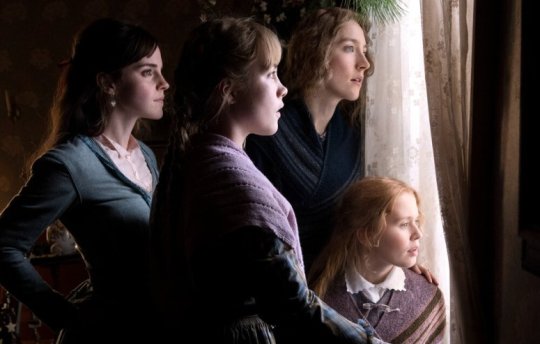

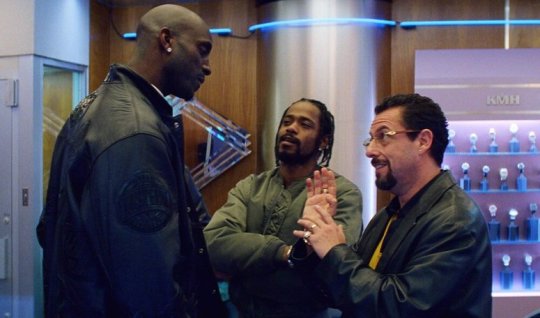



By Andrea Thompson
I state that my list wasn’t too late, 2020 came too early. So here are my top 25 movies of 2019.
25. Avengers: Endgame
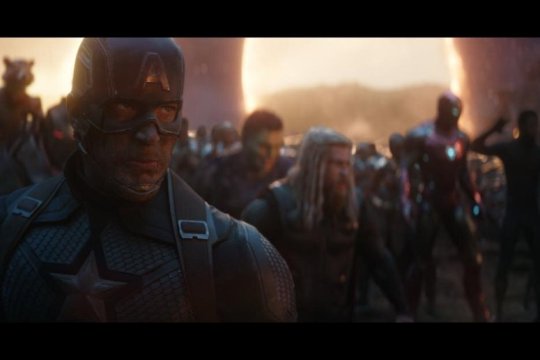
Walt Disney Studios
Fan service doesn’t have to be a bad thing. While “Avengers: Endgame” mostly gave fans what they wanted, it was also a fond farewell to an MCU that had been building for over a decade, one that would be greatly altered by the movie’s end. Making good use of its three hour runtime, “Endgame” takes it time wandering through its own universe in a way that’s both heartfelt and entertaining before getting the gang together in an absolutely jaw-dropping, action-packed climax that had the most jaded moviegoers cheering.
24. Knives Out

Lionsgate
Rian Johnson may have had a complicated year, but “Knives Out” has him on top of his game. Johnson has built a career around toying with audience expectations in the most enjoyable way possible, and he does so yet again in “Knives Out,” giving us a whodunit that seems to reveal who in fact dun it pretty early, only to provide even more layers to peel back. After wealthy patriarch Harlan Thrombey (Christopher Plummer) dies in an apparent suicide, gentleman detective Benoit Blanc (Daniel Craig) is hired to investigate, only to discover some very combative family dynamics, with caregiver and audience surrogate Marta (Ana de Armas) caught in the middle. Anchored by an all-star cast that also includes Jamie Lee Curtis, Michael Shannon, LaKeith Stanfield, Toni Collette, and Chris Evans, Johnson keeps the mystery and the fun coming from start to finish.
23. Monos
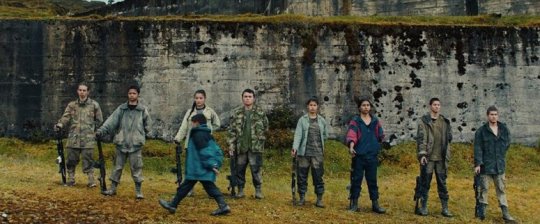
IMDB
Just when you think the eight isolated teenage soldiers in “Monos” are treating the unnamed war they’re fighting in like a neverending slumber party, tragedy strikes, and they become very aware of what the consequences of failure are, and the life or death stakes they’re involved in. As they descend from their remote base in the mountains to the jungles below, their bond is torn and transformed into something far darker, as the beauty of their natural surroundings likewise becomes less of a contrast and more of a complement to humanity’s brutality. Moisés Arias is a standout as the group’s charismatic leader, who likewise leads his charges (and peers) into their own increasingly insular culture, as the bonds of adolescence enable them to surrender more and more of their humanity.
22. Toy Story 4
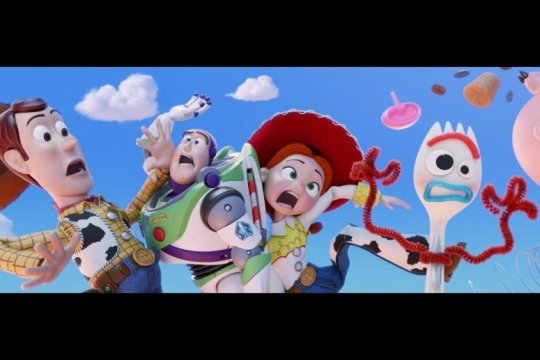
Walt Disney Studios
“Toy Story 4” certainly had no business being good. It was another sequel in a franchise that seemed to wrap everything up neatly in the last film, not only giving Woody (Tom Hanks) and his pals a happy ending, but reassurance that life would go on after their beloved Andy grew up and grew beyond them. So what else was left to stir any kind of conflict interesting enough to prevent one of the most creative and commercially successful film series ever made from devolving into one of the most cynical cash grabs of all time? Thankfully, quite a bit, and it mostly amounts to a case of white male anxiety. Woody had always been sure of his purpose, but when he runs into Bo Peep (Annie Potts), he’s inspired to rethink his life, as his former love has transformed from the demure, delicate toy who stayed behind on adventures to a capable leader who’s embraced life without a child, assists other discarded toys, and plans to see more of the world. It all amounts to a progressive message, that of being who you are right now. Life may change, and your place in it can become frighteningly precarious, but you should never be defined by your past, whether it was scarred by tragedy, or was the source of your happiest moments. Throughout it all, friendships, family, and love can last. To infinity and beyond.
21. Hustlers

STX Films
“Hustlers” is one of those films that could’ve just been a puritanical cautionary tale about the dangers of girls gone wild. Good thing writer-director Lorene Scafaria saves her anger for the patriarchy rather than the strippers who come up with a plan to turn the tables on their Wall Street clients after the recession hits. Even smarter, Scafaria anchors her story in the friendship between Ramona (Jennifer Lopez in a career-best performance), the originator of the scheme, and Destiny (Constance Wu). Before 2008, they and their co-workers are able to earn more than a good living, but after the financial crisis, their profession becomes less than viable. So they decide to drug wealthy Wall Street men and get them to spend ridiculous amounts of money, which they would then keep for themselves. By giving women who are normally sexualized furniture center stage, Scafaria allows us to share their delight in scamming the scammers, then their fear as their world inevitably unravels, resulting in an insightful, female-centric crime story that mostly unfolds sans judgment.
20. The Last Black Man in San Francisco

A24
Gentrification has been given the movie treatment before, but “The Last Black Man in San Francisco” doesn’t just show the scope of its horrors, it makes you feel them. In this world, it’s perfectly feasible for a little girl to happily skip down the street while men in hazard suits are cleaning up the water, as long as she resides in a neighborhood the rest of San Francisco is determined to leave behind in its mad rush for profit. Jimmie Fails (co-writer Jimmie Fails, who plays a fictionalized version of himself) has one thing to cling to though: a beautiful house in the heart of the city, which was built by his grandfather after he returned home from WWII, and is now occupied by an older white couple. When the couple departs, Jimmie and his friend Mont (Jonathan Majors) decide to move in as squatters in a desperate attempt to reclaim it. A tribute to a city that provokes love and despair in equal measure, “The Last Black Man” is a devastating indictment of an America that claims to reward hard work, yet often condemns those who are born with the most odds to overcome.
19. Ready Or Not

In-laws can be tough, but the clan in “Ready or Not” could probably teach the Lannisters a thing or two. Having grown up in foster care, Grace (Samara Weaving) is eager to bond with her new family, so she happily participates in their tradition of choosing a random game to play on her wedding night. But when she draws the card “Hide and Seek,” she discovers that her new relatives believe that if they are unable to find her and kill her before the night is over, they will lose their vast family fortune. In addition to making the honeymoon awkward, Grace must fight to stay alive in an environment where everyone now regards her as disposable, an acceptable sacrifice to keep the money flowing in. As wickedly funny as it is violently entertaining, “Ready or Not” is a surprisingly heartfelt tribute to humanism and the benefits of being an outsider…especially when insiders have murder on their minds.
18. 1917
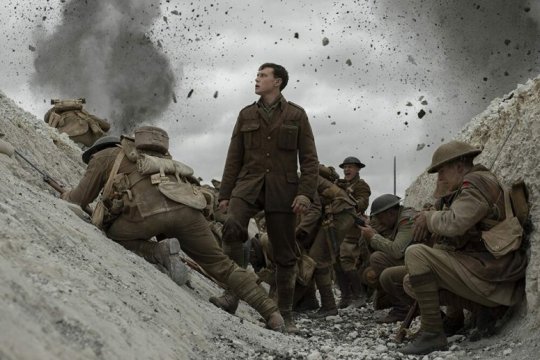
IMDB
Sam Mendes has a reputation for intensity, but his harrowing war drama “1917” brings more suspense and terror than most horror movies. During WWI, two young British soldiers are given a seemingly impossible mission of going behind enemy lines to deliver a message. If they make it through, they’ll not only prevent a disastrous attack, but save quite a few lives, including the brother of one of the soldiers. Shot to give the effect of one continuous take, Mendes turns what might have been a gimmick and uses it to capture the horrors of war, and the humanity that often emerges in spite of it, all in a technically masterful work that showcases a filmmaker at the height of his storytelling abilities.
17. A Beautiful Day in the Neighborhood

Sony Pictures
Given that 2018 saw the release of the critically and commercially successful documentary “Won’t You Be My Neighbor?,” did 2019 really need another film about Fred Rogers? Hold that thought, because “A Beautiful Day in the Neighborhood” makes an enthusiastic case for yes. It’s probably no coincidence that the posters for both films also mention kindness, since Fred Rogers not only advocated it, he seemed to embody it, and not only to the children who were the target audience of his wildly successful show “Mister Rogers’ Neighborhood.” Even if Tom Hanks doesn’t have much of a resemblance to Mr. Rogers, he nevertheless seems to channel him and the values he tirelessly championed to an uncanny degree, enough to make journalist Lloyd Vogel’s (Matthew Rhys) journey from cynic to believer feel fresh rather than tired. Director Marielle Heller also brings the same clear-eyed compassion that made “The Diary of a Teenage Girl” and “Can You Ever Forgive Me?” so heartfelt to this story of a budding friendship between two very different men.
16. Her Smell

Elisabeth Moss has long since proven she’s a force of nature, more recently on the Hulu series “The Handmaid’s Tale.” So what more does she have to prove with the film “Her Smell?” Quite a lot it turns out. If “The Handmaid’s Tale” is a showcase for Moss’s powers of restrained passion, then “Her Smell” allows her to tear up the screen like a tornado, destroying all the mere mortals unfortunate enough to become swept into her path as the self-destructive punk rocker Becky Something. As Becky’s mood shifts with the rapidity of a deranged pinball, she can’t seem to latch on to anything resembling stability, despite the efforts of her bandmates, collaborators, and ex-husband to steer her towards a healthier direction. Or just anywhere other than the rock bottom she seems determined to hit with full force. If Becky’s downward spiral is difficult to watch, it’s even harder to look away, as Moss infuses her with a charismatic talent that makes the inescapable tragedy feel Shakespearean in scope.
15. Varda By Agnes

If the documentary “Varda By Agnès” is difficult to define, it’s because the late great filmmaker Agnès Varda herself defies anything resembling easy categorization. Like her other films, the premise of “Varda By Agnès” is deceptively simple, yet soon reveals layers of complexity which unfold throughout, as Varda looks back on her life and career while articulating her style of filmmaking. However, the doc is far more than a retrospective, and far less predictable, at one moment reminiscent of a casual chat with an old friend, the next an imaginative journey wherein a great artist instructs devoted cinephiles and neophytes alike on how she not only viewed, but interpreted the world. It’s a fitting end to a decades-long career and life, both of which 90-year-old Varda defined on her own terms to the end.
14. The Farewell
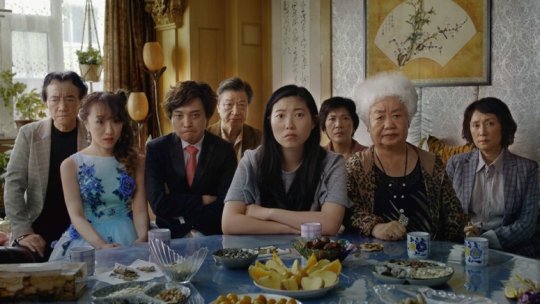
IMDB
A movie with a character who happens to be a terminally ill grandmother is a tough sell for a comedy. But the matriarch who receives a fatal cancer diagnosis isn’t just a side character in “The Farewell,” she’s the central plot point. After struggling New Yorker Billi’s (Awkwafina) beloved Nai Nai (Shuzhen Zhao) is diagnosed, her family opt to keep her illness a secret and decide to throw a fake wedding to provide an excuse for them all to gather in China and celebrate Nai Nai one last time. And it’s…pretty funny, with not just the expected dark humor, but a wide spectrum of hilarity abounding alongside the touching moments of grief. Based in part on writer-director Lulu Wang’s own experiences, “The Farewell” is apt to make you laugh and cry not just in equal measure, but simultaneously.
13. Little Woods

IMDB
You can never have too much of Tessa Thompson, and “Little Woods” allows her to fully immerse herself into a role and world where a single wrong step could tear through a life with the force of a tornado. And she downright mesmerizes as Ollie, who finds herself in tight circumstances with a mere eight days left on her probation and the hope of a new life. Or rather, her somewhat estranged sister Deb (Lily James) does after their mother dies, and Deb and her son find themselves on the verge of homelessness and destitution. To help her family, Ollie decides to reenter the world of prescription drug smuggling, a dangerous but profitable business in their bleak rural North Dakota town. Remarkably, this is director Nia DaCosta’s feature debut, and the fact that she gives us a brilliantly realized modern Western with a feminist twist, where a drug run to Canada also doubles as an attempt to receive a safe and low-cost abortion, is hopefully indicative of much more to come. Thankfully, there are already hopeful signs of just that.
12. Dolemite is my Name

IMDB
Just when you think Eddie Murphy might be teetering on the edge of irrelevance, he reminds you why he’s a pop culture phenomenon by tearing up the screen as Blaxploitation legend Rudy Ray Moore, who became famous in the 70s for his portrayal of alter ego Dolemite in his film and stand-up career. Even if we’re aware of how this is going to end, with Moore investing – and risking – everything he’s built to make a film based on his Dolemite character, Murphy is astounding, radiating joy as he brings his larger-than-life energy and charisma to Moore, who was similarly magnetic. And it’s not just Moore, but the people he’s gathered around him who succeed as well, many of whom were just as underused by the mainstream entertainment industry. As they all revel in building and profiting off a film made on their own terms, it’s the kind of tender, inspirational tribute that earns every bit of its charm and intensity.
11. Queen & Slim
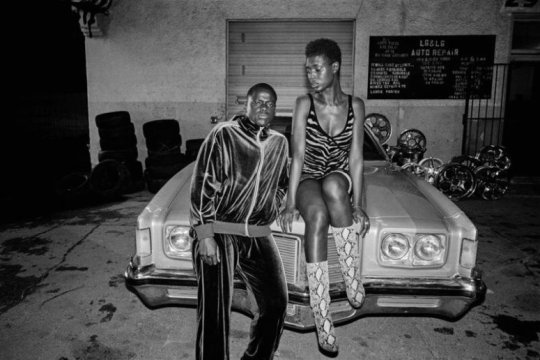
Universal Pictures
“Queen & Slim” kicks off with its title characters on a date that is only remarkable for its lack of spark, but things get heated in the worst way after a police offer pulls them over for a minor issue, and things escalate, with Queen (Jodie Turner-Smith) getting shot and Slim (Daniel Kaluuya) shooting the officer in self defense. The two then go on the run together, with their bond and their relationship blossoming as they drive south through a lush vision of Black Americana. That they both come off as deeply human while remaining symbolic of the tragic human cost of racism seems due in large part to the near symbiotic creative melding of director Melina Matsoukas, who also directed Beyonce’s “Lemonade,” and writer Lena Waithe, the creator of the series “The Chi” and who also wrote the acclaimed “Master of None” episode “Thanksgiving.” Their story is tragic, but it is also full of beauty and humor as Queen and Slim dare to hope for something better, even as they know the odds against such a thing are overwhelmingly stacked against them.
10. Fast Color

Lionsgate
It’s said that not all heroes wear capes, and certainly none of the women with superhuman abilities do in “Fast Color.” This criminally underseen gem has many of the beats, but almost none of the familiar tropes of typical superhero fare. Gugu Mbatha-Raw plays a woman named Ruth, a fugitive on the run from authorities attempting to harness her abilities, and most critically, from herself, since those abilities have become a destructive force she’s unable to control. In this bleak dystopian future which is rapidly running low on resources, the key to Ruth’s future may just lie in the home she fled years ago, where her estranged mother (Lorraine Toussaint) and daughter (Saniyya Sidney) embody a past she tried to escape, and a more hopeful future they may be able to bring to fruition.
9. The Souvenir
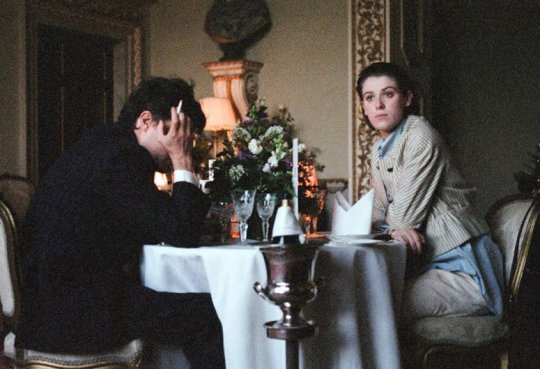
IMDB
Joanna Hogg’s semi-autographical film “The Souvenir” is like a deceptively calm pond which conceals a raging torrent just beneath the surface. Honor Swinton Byrne, the woman responsible for the storm that’s eventually unleashed, may still be constantly referred to as Tilda Swinton’s daughter, but this film suggests that won’t be the case for long. Her performance as Julie, a young film student in the 80s whose dreams are nearly derailed by her involvement with an older man who is also a heroin addict, is the kind of on-screen arrival that the term breakout role was made for. With part two arriving next year, it’s hard to imagine how Hogg or Byrne will match the kind of urgency they brought to this film, but this creative pairing – which feels like a match made in cinematic heaven – could feasibly pull it off.
8. One Child Nation

One Child Nation
Director Nanfu Wang grew up in a time when China’s infamous one-child policy was at its height, with every facet of society extolling the virtues of having a smaller family…and the consequences of disobedience. After Wang had a son, she decided to investigate the policy she’d never given much thought to and its impact. When she uncovered was a complex and horrific hidden history of forced abortions, child abandonment, and infants who were literally torn from their arms of their families and given to American couples for adoption, who were tragically unaware that they were abetting kidnapping. Wang fearlessly confronts her own complicity and that of her family and community as she delves into the past, and how China is attempting to erase it from its future.
7. Uncut Gems

A24
If we’re our own worst enemies, then Adam Sandler’s New York City jeweler Howard Ratner will never have a worse one. A gambling addict who’s always in search of that next big score, his need for his drug of choice has wreaked havoc on his personal and professional life. He’s managed to get his hands on the titular gem that may finally change his luck…if he can somehow hold off on his on self-sabotaging impulses. Anchored by not only a career-best performance by Sandler, but a breakout one by Julia Fox as Howard’s mistress, the Safdie brothers immerse us into Howard’s world, then his mindset as he unravels, all the while clinging to the belief in that one big break that could still change everything.
6. Bedlam

Sundance Institute
In exploring the history of mental illness in America, director Kenneth Paul Rosenberg explores his own family, and how they reacted to his sister’s mental health struggles, then expands his scope into the personal and political ramifications of how we decide to treat a hidden social crisis of our time, one that is steadily worsening. As he travels to jails, Ers, and homeless camps, Rosenberg grounds his documentary with subjects who permit him a staggering amount of access to the highs and lows of their journeys to stability, and more often, how ill-equipped the system is to assist them. It will leave you emotionally gutted, but also with a much-needed greater understanding of a large population who are in desperate need of both compassion and assistance.
5. Luce

IMDB
No one escapes unscathed in “Luce,” including us, as director Julius Onah slowly but surely tightens his grip on our collective throats, forcing us to realize how even the most privileged among us are caught up in a system that ultimately demeans us all, with little doubt as to just who bears the brunt of the consequences. The titular Luce (Kelvin Harrison Jr.) first seems to have it all and more. Adopted as a child from war-torn African county by suburban white couple Amy (Naomi Watts) and Peter (Tim Roth), Luce is a star athlete, a top student, and popular with students and teachers alike. It’s only when his teacher Harriet (Octavia Spencer) alerts his parents to a potentially disturbing essay by Luce that the cracks in the facade start to show, and Amy realizes just how little she may know the son she’s loved and raised, and perhaps also tokenized. Harrison’s masterful performance is equal parts chilling and heartbreaking as a young man who may be capable of great and terrible things. Just what will Luce become? The film has no answer.
4. Little Women

Sony Pictures
Greta Gerwig didn’t just write and direct Louisa May Alcott’s beloved 1868 novel, she brought it to life, with each of the four March sisters getting their due. Yes, even Amy. One of the most brilliant decisions Gerwig makes is to bring the book to the big screen in a nonlinear fashion, juxtaposing scenes from the sisters’ idyllic childhood with their darker adulthood. While the Civil War rages, depriving them of their father, the March family becomes a matriarchal worldutopia, wherein Meg (Emma Watson), Jo (Saoirse Ronan), Beth (Eliza Scanlen), and Amy (Florence Pugh) are free to explore their hopes and ambitions, guided by their beloved Marmee (Laura Dern), and befriended by their wealthy neighbor Laurie (Timothée Chalamet). As each sister struggles to find her way, Gerwig takes care to ensure that their lives not only feel familiar, but relevant as each wrestles with how to balance their dreams with the narrow expectations imposed on them.
3. Atlantics

IMDB
Mati Diop made history in more ways than one with her feature debut “Atlantics.” She was the first black woman to have a film in the main competition at Cannes, where “Atlantics” won the Grand Prix. The film more than lives up to the hype, with a touching love story that is also part supernatural fable and devastating indictment of modern exploitation and rampant poverty. Ada (Mama Bineta Sane) lives in a Senegalese suburb, and is promised to a wealthy man. But she is in love with Souleiman (Traore), a construction worker on a futuristic tower which is due to open soon. Souleiman and his co-workers haven’t been paid for their labor in months, so they decide to take their chances and depart by sea in search of something better. As Ada waits for news of him as she prepares to marry, she gradually learns that the spirits of Souleiman and the other young men are possessing the bodies of the living and demanding justice. As Ada slowly comes to accept the truth and take control of her own life and body (she’s forced to take a virginity test), Diop infuses her story with a beauty that never belies its sense of urgency for compassion in a world that can often seem short on it.
2. Parasite

IMDB
The word parasite conjures up images of a creature which takes from a victimized host without a thought of giving or the consequences thereof, but as Bong Joon-ho’s latest slice of brilliance unfolds, it’s unclear just whom is feeding on whom. But in the vicious capitalistic times we’ve arrived in, perhaps everyone is feeding on everyone, whether they know it or not. In the story of the impoverished Kim family, who manage to scam their way into various positions of employment with the wealthy Park family, Bong Joon-ho serves up a scathing indictment of the inequality which twists haves and have-nots alike. As one jaw-dropping development after another threatens to deprive the Kims of their newfound prosperity, both families suffer the horrific consequences. And even if you are able to free yourself from the dark obsession inherent in wanting a good life which remains tantalizingly out of reach, the vicious cycle, one borne out of a need that will never be quenched, continues.
1. Portrait of a Lady on Fire

IMDB
If Céline Sciamma had just wrote and directed a romance between two women who find the kind of love that leaves the screen burning from their mutual passion, “Portrait of a Lady on Fire” would still have been one of the best films of the year. But Sciamma does so much more, making the case for an entire history that has mostly been unacknowledged by the art world. Not just of the female artists who managed to create in spite of the obstacles, but the lives of women in general, who are often not considered worthwhile subjects. (Times have sure changed, huh?) “Portrait” may take place in 18th century France, but its insights into the dynamics between artist and muse, how art is created, and how those who are silenced manage to find a voice, feels very much needed in our present moment.
from A Reel Of One’s Own https://ift.tt/2RcXbMK
via IFTTT
from WordPress https://ift.tt/35SBg2A
via IFTTT
1 note
·
View note
Text
On Thursday 26 January 2017 I had the privilege of attending a Masterclass at Red Hill Academy in Nottingham, thanks to my involvement in the HE+ programme. As you may have assumed by the title of this post, the focus of the masterclass was what could have happened and how the world would differ now if the first World War had ended at Christmas 1914.
Overall, it was an incredibly enjoyable afternoon and it was clear that the lecturer was really passionate about the topic. Best thing, in my opinion. You could be talking about the amount of hair your grandma lost yesterday and, so long as you felt strongly about it, I would spend hours listening.
I will not talk at length about the reasons behind the First World War or the battles that were fought and who won and who lost, but I will mainly focus on speculating and making hypothesis, analysing why the war did not end at Christmas 1914 but dragged on for almost four more years.
Officially, England entered the First World War on the 4th of August 1914 and played a fundamental role until its ending, on 11 December 1918. Our lecturer pointed out how saying 1566 days of war has a much greater effect than saying four years. 1566 of fighting, pain, blood and deaths. Men and women pointlessly perishing, their lives cruelly ended by a conflict they were not ready for, that was professed as bound to be over “by Christmas”.
To dive straight into the matter protagonist of the lecture, it is to analyse the state of things by December 1914. Thousands had been killed and the war was an ongoing conflict mainly fought in new realities known as trenches, corridors dug in the ground, to remain hidden and launch offences. 400 miles of trenches ran between France and Belgium: Germans on one side and French, Belgians, British on the others. Between them: no man’s land.
The war had provoked the death of the professionals and many were pushing to end the war; pope Benedict XV begged for peace and British women, suffragettes, sent “open Christmas letters” to German women.
However, the most mesmerising of things what was developed in the mud, desperation and suffering: fraternisation. Soldiers, deep down in opposite trenches, armed and in the cold, started making friends. The trenches were quite, as if pacts had been agreed between the fighters. When food came, when the weather was bad, when the enemy needed another person to play bridge. Records of this fraternisation exist and warm hearts.
A British soldier put down in his diary how a German sergeant went over to their side to ask how they were doing. On the 7th of December 1914, Charles De Gaulle wrote of French desire to leave the enemy in peace. Singing competitions were frequent and banter, banter, banter.
Officers and men 26th Divisional Train play a game of football.
Armistice Day football match at Dale Barracks between german soldiers and Royal Welsh fusiliers to remember the famous Christmas Day truce between germany and Britain PCH
Christmas day: 100,000 British and German soldiers were involved in the truce. Little Christmas trees were put on the parapets, little presents were shared and a concert was planned. Words describing Germans calling for truce, a British soldier putting his head up and going in no one’s land to shake hands with a German friend. Shared cigarettes and sketches of soldiers that had been barbers cutting the enemy’s hair and football matches and buttons and temporary laughter.
However, not everyone took part in the Christmas truce. This is one of the reasons why the war did not end there and then. Some soldiers skeptically and spitefully looked at the truce (a major example being Adolf Hitler himself) and many died when others were singing carols – Huggins Sergeant T.E. Gregory. Secondly, officers were furious, not prone on allowing what was no less than mutiny and quickly they went on using military discipline to get the men back fighting. Understandably, soldiers could have, after those exchanges, refused to battle any longer, derailing the fragile tracks of war.
Therefore, we can say that the war did not end for these two main reasons: not everyone was involved in the truce and the officer victoriously reacted fast enough.
After that, the war took a turn that would have never allowed for such possibility of peace to be even thought of. The introduction of gasses took away from soldiers that personal relation that direct combat creates. No human relation or compassion or common desire came with gas, only destruction and cruel survivals.
Now that we have identified why a peace may have happened and why it did not, it is time to speculate. Firstly, I want to raise my hands flagging that once you start looking and the past, moving little dowels and placing them in a different place, there is no end to its consequences. It is a never-ending cycle of mutations, smuggling in cracks and crevices.
However, it is great fun, especially when you touch at such major matters such as a world war.
To begin with, the most obvious consequence would have been an increase in the world population: only Britain and its colonies lost one million men and thousands more were lost, never found. Apart from this, though, we have to look at Russia and at the Communist revolution of 1917: Lenin was helped by the Germans to go back after the exile and it is likely that he would have found so much harder to push for that drastic revolution to happen. Our lecturer underlined how, in his opinion, Russia would have probably developed in a constitutional monarchy, had Tsar Nicholas II had enough time to realise how he should have approached the situation.
Moreover: Adolf Hitler. If WWI had ended at Christmas 1914 surely Germany would not have had to undergo the harsh reparations it had to after the Versailles Treaty, consequently the German people would have not stagnated in such a terrible crisis and as history teaches, when people are desperate they turn to extremism, namely – in that case – nazism. On Thursday, we stopped there with our speculation on Hitler and Germany but, really, we could then go onto the II World War itself: it is likely that that would not have occurred, had Hitler not gained power.
Furthermore, we observed at the Austro-Hungarian Empire, concluding that it probably would have evolved in a federal country, like America is. Also, the British Empire may have retained some of its colonies: in fact, WWI cost the UK such an incredible amount of money that 1) they could not afford to battle colonies seeking independence and 2) most of those had made such major contributions in the war that it did not seem fair to deny them freedom.
Another point can be made regarding the fate of France. As we very well know, extremist governments developed, after the First World War, in Italy and, especially, Germany. Indeed, this latter country was the one the most suffered because of post-war reparations: if the war had ended at Christmas 1914, it very likely that such far-right dictatorship would have developed, instead, in France, because of disappointment caused by the hypothetical outcome of the war.
Obviously, then, inventions that the First World War required in order to be fought would probably have been invented years and years later: a clear example are weapons such as bolt-action rifles, capable of firing ten or more rounds per minute. Also submarines, tanks and warplanes would not have ben developed at that time, mainly because there was no need for them.
The final point I feel like bringing up as a potential change that the premature ending of the First World War might have caused is Europe, this idea of geographically close areas coming together as an economic and popular unity, to support and push each other. In my opinion, it would have developed far earlier, if the changes we have just analysed had occurred. Without the harsh relationships that WWI left between some of those powers that currently are at the heart of the European Union and with the slightly minor chance for a Second World War to begin so soon after, countries would have probably thought about making closer ties way earlier.
To conclude, I have to say that the lecture was incredibly entertaining, well put and made me think a lot more about why our world is how it is and how it could have drastically changed if only things had gone differently at Christmas 1917, one-hundred years ago.
I will soon excitingly attend other lectures thanks to the HE+ programme.
Masterclass: What if WWI had ended at Christmas 1914? On Thursday 26 January 2017 I had the privilege of attending a Masterclass at Red Hill Academy in Nottingham, thanks to my involvement in the HE+ programme.
1 note
·
View note
Text
Hate Doesn’t Help

I’m writing this on Sunday 4th June, 2017. Last night, three maniacs took to London’s streets to spread fear and mass panic. Details are still coming out, and the death toll is apparently still rising. It’s safe to say there’s a lot of emotion being stirred up right now.
But one emotion that has no place is hate. Yes, I know I’m not the most original for saying it, but hear me out. It’s understandable to feel it, and its completely fine to feel anger. These emotions are human nature; but they can be destructive. There has never been a time when hatred has saved a life or undone a tragedy; hatred is hatred, it feeds off of and regurgitates itself in an endless cycle.
Do you think I don’t hate these three assholes? Do you think I don’t feel angry about what happened? Of course I do. I hate what happened in Manchester as well, and I’m angry about that too. THIS is a natural response. You are not wrong for feeling this in this way; but there is always a line. A line I never cross. I hold those responsible accountable, and I do whatever I can to make sure people get through this. I never blame the innocent. I never stoke the fires of bigotry and xenophobia. I never push a hateful agenda.
It’s too bad a lot of people can’t see that line.
As it was happening, as the chaos and panic erupted over London, hundreds of thousands of people took to Twitter. Many shared condolences - passing on messages of support; others retweeted and shared news and information to help keep people in the loop; some even shared official police reports. But there were some who did none of this. There were some - so blinded by their own self-importance - that they decided that this was the perfect time to stand on their platform and spread more hatred. Of all times, this was it, right then, as a terror attack was unfolding. We should have been focusing on getting through it all, offering whatever we could - advice, prayers, condolences. Doing anything else is just gross. Details were thin at best, yet people had already made up their mind about who these attackers were and what had led to their creation.

Immigration! Poor Security! The Government! The luvvie Leftists! Islam! The Quran!
There had been no reports (at least not one I could find) that this was an Islamist extremist incident at the time. All I could see was that it was that the police were treating it as a “terror attack”. Yes, I know, likelihoods suggest that it is the work of Islamist extremists, but how quickly people latched on to Muslims is a frightening reality. It was almost as if they didn’t care about the truth, whether it was in their favour or not; all they wanted to do was spread their hatred.

And that’s just it. Right there. This is the type of problem we have. These people don’t care about the victims. They don’t care about who died; killed by whom; where it happened. None of it matters. What matters is the agenda, and the agenda is “Islam is Evil”. Just let that sink in. Think about that; they will use the suffering and pain of others as an excuse to spout narrow-minded views. Worse still when they hail from America and use our suffering as an excuse to make it all about them.

They are actually glad - if you can believe it - that this happened, because it gives them an excuse to say “I told you so” even if what they told us was wrong, and is still wrong to this day. Anyone would think they were soldiers of ISIS.
Well, arguably they are. These people are the best weapons the terrorists have. They’re so good, they don’t even realise who they’re working for. ISIS have gone on record with their goals. Yes, they want to destabilise the west, to make us fear them, and to cause mass hysteria; but they also want to divide. They want the west to turn their backs on Muslim people, to split the world into two camps: Us and Them. The west (arguably Christian) and them (Muslim). The more people who step forward with their poisonous viewpoints on Islam, the more ammo they have to recruit impressionable Muslims to their cause. Muslim bans and EDL marches are a plus for these guys. You’re proving the message they’re putting out there to Islamists: “They will never accept you. They are the enemy. Join us and fight against them”
To us, we know that this message is bullshit. At least on the grand scale it’s not true, but on the ground floor, in the daily life of Muslim people - the men, women and children on the front line of all this - this message can sometimes ring true. When a mosque is fire bombed in retaliation for what happened in Manchester DESPITE Muslim communities reporting potential extremists. When Muslim women are verbally abused on a transport because they are perceived as outsiders. When Muslim people hide away in their homes because they’re afraid to go outside after an attack has happened in case they are attacked themselves:

These examples and many others lay the foundations for extremism.
Everyone gets frustrated; and everyone deals with that frustration in different ways. Some do it peacefully - like the Black Lives Matter movement in America, protesting with non-violent demonstrations. But some do it destructively. “Why is our home under attack? Why was our Mosque burned and vandalised? Why should we have to live in fear? Why can’t I wear what I want to wear? Why am I considered Muslim but not British even though I was born here? Why? Why? Why?” These questions are answered as above: “Because they will never accept you. Because they are the enemy”
I think too often people forget that Muslims are human beings. They’re not machines, programmed for good or evil. They’re not there to score political points for your party, be it for the right or left. They’re not inherently bad people, nor nice people, nor annoying, nor compassionate, nor arrogant, nor selfish, nor kind. They are like everyone else. Some are capable of devastating horrors, just as others are capable of brilliant and much needed compassion. The actions of the radical should not be used as weapons against the peaceful.
Does any of this mean I condone what happened in Manchester or London? Am I a terrorist Sympathiser? Hell NO! But I believe that understanding who and what our REAL enemies are is the first step to defeating them. Understanding is not the same as agreeing. You may disagree with my world view, but if you understand it maybe we could reach a middle ground. But there is no excuse for this vitriol; this hate speech, knee-jerk reaction. Extremism exists on all sides, and this is no better than the extremism we’re trying to fight; worse, it’s the same extremism.

As I said; hatred and anger are human emotions. They’re real, and you’re not wrong for feeling them, but too much of it can turn you into something bad. Wallow in it too much and it’s enough to turn you into a monster. A monster who thinks saying “I told you so” while people suffer is the right hill to die on. Monsters who think their hateful voice is the one to be heard whilst families from all walks of life pray for the safety of their children. Monsters who will gladly watch innocent people die if it means they can get attention.
So the next time an incident like this happens; the next time another attack strikes close to home and your fear turns to anger and hatred; just when you’re about to yell your thoughts and comment on the internet, ask yourself this:
Would it help?
“Will what I’m about to say actually help anyone suffering right now? Will it give someone closure, or offer any means of support to those in need? Or will it just be for me and my followers? Will it just serve as a means to inflate my deluded sense of self importance? Or worse, will it serve only to fuel our enemies, and make them stronger?”
When you have your answers to these questions, make your choice.
Do you want to Hate? Or do you want to Help?
Pick one.
youtube
0 notes
Text
Mindful Memorial Day
By John M. de Castro, Ph.D.
“We who are left how shall we look again
Happily on the sun or feel the rain
Without remembering how they who went
Ungrudgingly and spent
Their lives for us loved, too, the sun and rain?”
~Wilfred Wilson Gibson
Memorial Day is the unofficial start of the Summer holiday season. But, it’s primary purpose is to remember and honor those men and women who have died in wars. As such it’s a somber occasion and a reminder of the human cost of warfare. This is usually a day celebrating patriotism and the righteousness of the country’s cause. Some may think that I’m being a little discourteous to the honored dead. But, I believe that the greatest honor we can provide is to work tirelessly to insure that no one else has to die for their country in warfare.
Some wars are regrettably necessary. At times, pacifism and nonviolence just can’t work. It requires a minimally just society. For example, in 1938 Adolph Hitler advised the British government on how to protect their empire from the threat posed in India of Mahatma Gandhi: “kill Gandhi, if that isn't enough then kill the other leaders too, if that isn't enough then two hundred more activists, and so on until the Indian people will give up the hope of independence.” Fortunately, the British did not follow this advice and Gandhi’s nonviolence triumphed. But, if this had been Hitler’s empire, pacifism, no matter how well led or intentioned, would have failed miserably.
Even the Buddha who taught love, compassion, and nonviolence, also taught that we should defend ourselves. There are sects of Buddhist monks who practice martial arts and are celebrated for their skills. When under attack, we have a right and perhaps an obligation to stand up and resist violent assault. If non-violent means aren’t successful, then violence and aggression may be necessary. This is never a good thing, but at times necessary. There have been far too many wars, most unnecessary. We should honor the courage, valor, and commitment of those who died in war by doing our best to make sure that unnecessary wars are never fought again.
It is right that we honor those who died in warfare, not just soldiers, but also civilians and merchant marine who often perish in massive numbers. They too should be remembered. We should always remember that what we have and enjoy, including peace, was paid for dearly. But, we should honor all who perished. This doesn’t mean just those who belonged to our side. We should remember that the vast majority of combatants entered into battle with the finest of intentions, believing that their cause was right and just, and that they were fighting for their families and their countries. Regardless of whether they were misled by unscrupulous, evil, or incompetent leaders, they entered into battle honorably and deserve our respect.
It is sometimes difficult to see, but their sacrifices have paid off for the rest of us. Since World War II, European countries and similarly, the Asian countries of China, Korea, and Japan, who had been at virtually constant war among themselves for thousands of years, are now peaceful and there has not been an armed conflict between them in over 70 years. So, even with all of the conflict in the world, there is less warfare now than at any time in recorded history. We have the honored dead from the terrible conflict of World War II to thank for the peace and prosperity that has been enjoyed since. We don’t need this reason to honor them, but it is reassuring to know that their sacrifices were not in vain.
To prevent these horrors in the future and honor our dead by abolishing warfare completely, there are a number of strategies that may be helpful. We should view our past, present, and future enemies, as the great sage Thich Nhat Hahn did during the Vietnam War, as people whose lives, backgrounds, training, and beliefs put them into the roles they are playing. If we lived in their shoes, we would likely make the same choice they did. No matter how despicable we may think they are, or how horrible their deeds, we need to understand that what they experienced in life, led them there. If we truly place ourselves in the shoes of our enemy, do we honestly believe that we would make different decisions. The terrorist, so despised in the west, may have been brought up in poverty, with little education save for religious indoctrination, that taught him that his god demands that he kill the infidel and that he will be rewarded in the next life for doing so. If we were raised similarly, would we act differently. This kind of understanding can lead to actions that may help to prevent future violence. Seeing the enemy as intrinsically evil can only lead to more warfare. Seeing them as human beings whose situation dictated their behavior can lead to peace.
A key strategy for preventing future wars is forgiveness. Violence begets violence. Retribution demands that the people who killed your family members must themselves be killed. But, this is a never ending cycle as the families of those you killed now seek to kill you. The only way to break the cycle is forgiveness. This can be very difficult. But it is the only way. Nelson Mandela, when he took over leadership of South Africa from those who oppressed and imprisoned him and his people for decades, didn’t enact retribution. Instead he launched a massive campaign of forgiveness and reconciliation. He understood that this was the only way to heal his country. He was amazingly successful and South Africa, although far from perfect, has become peaceful and prosperous working for the betterment of all of its citizens.
Most people look at creating peace and preventing war as a massively difficult task that is beyond their capabilities to resolve. As a result, they do nothing waiting for a Ghandi, Mandela, or King to lead them. But, this is a grave mistake. We can all honor our fallen by contributing to world peace. We can do this if we stop looking for grand solutions and instead, contribute in the ways that we can during every day of our lives. By leading peaceful, nonviolent lives we contribute. We create ripples on the pond of life spreading out to the far horizons. “If in our daily life we can smile, if we can be peaceful and happy, not only we, but everyone will profit from it. This is the most basic kind of peace work.” ― Thich Nhat Hanh
Communications is a key to peace. By engaging in non-violent communications, what the Buddha calls “Right Speech,” we not only produce peace in ourselves but in the people we’re communicating with. Their peacefulness then affects others, who affect others, etc. interpersonal ripples of peace. We also become role models for our children who then become role models for their children, etc., producing intergenerational ripples of peace. If many of us practice non-violence the ripples will become build and sum into tidal waves of peace washing over the earth. “If we are peaceful, if we are happy, we can smile and blossom like a flower, and everyone in our family, our entire society, will benefit from our peace.” ― Thich Nhat Hahn
Practicing mindfulness can similarly promote peace and create ripples. By being focused on the present moment non-judgmentally, we are fully present for those around us. This produces the deepest kinds of human communications based upon understanding and compassion. In human communications there is great power in non-judgmental listening. It has a tremendously calming effect on people, particularly when they are highly agitated. In a leadership position I once held, I would quite often have people come into my office and just rail on about the injustices they’ve experienced and the horrible people around them. I would just listen and occasionally acknowledge their emotions. At the end, they would almost inevitably thank me and tell me how much that helped. I had done nothing other than deeply listen and this by itself had dramatic effects. Over time, I could see how the ripples moved outward and affected the entire organization. Listening is a powerful tool of peace.
Another key method for promoting individual, societal, and planetal peace is practicing compassion. This is simply looking deeply at ourselves and others to understand their suffering. First we must have compassion for ourselves. Unless we do, we cannot have true compassion for others. We have to acknowledge that we are flawed human beings and not scold ourselves for it, but compassionately understand and forgive ourselves. We are essentially good. But, sometimes our background, indoctrination, humanness, and circumstances conspire to produce harmful acts. Rather than looking at the actions as good or bad, think of them as skillful or unskillful; bringing greater or less harmony and happiness. We need to understand this about ourselves, forgive ourselves with the intentions to do better, to be more skillful, and look upon ourselves with eyes of kindness and caring.
It is important to also recognize and congratulate ourselves for all of the good we do. Celebrate our goodness while having compassion for our faults. Once, we can do this. We can then move on to others. Being compassionate to our enemies involves looking deeply into their suffering, looking deeply into their background, indoctrination, humanness, and circumstances that conspire to produce harmful acts, and then being forgiving, kind, and caring about them. This is essential to healing wounds and developing world peace.
So, on this Memorial Day, let us resolve to honor the fallen for what they have done. But let us truly honor them by working to make their sacrifices not in vain, to do what we can to develop peacefulness in ourselves and others, and to let their deaths be the foundation not of more war but of lasting peace.
“On Memorial Day, I don't want to only remember the combatants. There were also those who came out of the trenches as writers and poets, who started preaching peace, men and women who have made this world a kinder place to live.” - Eric Burdon
1 note
·
View note